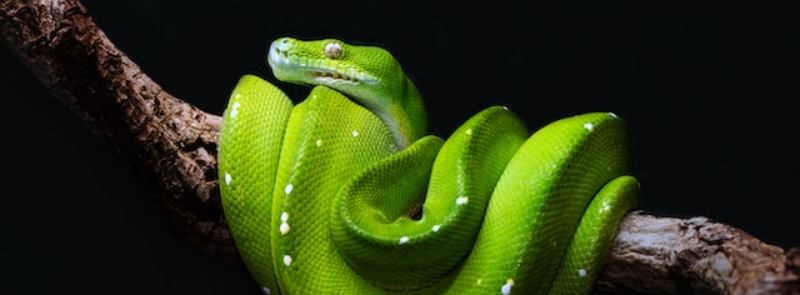
When It Occurs
Every February 1st
Timeline
Days Passed (1062)
# Hashtags
#NationalSerpentDay #BeautyOfSnakes
Every year on February 1, we celebrate National Serpent Day, dedicated to recognizing and acknowledging these fascinating creatures. Snakes, often symbolic of various aspects like medicine, good, evil, and fertility, have been both revered and feared throughout history. With nearly 3,000 species worldwide, snakes exhibit a diverse range of characteristics. From the smallest snake, the Barbados thread snake, to the longest, the reticulated python, serpents continue to captivate our interest and imagination.
History and Significance: Serpents have played a significant role in human history, mythology, and religion for thousands of years. In ancient civilizations, serpents were often seen as powerful symbols. For example, in ancient Egypt, the cobra was a symbol of royalty and divine authority, often depicted on the pharaoh’s crown. In Greek mythology, the serpent was associated with healing and medicine, as seen in the Rod of Asclepius, a symbol still used in the medical field today. In Hinduism, the serpent deity Shesha is said to hold the universe on his many heads.
Despite their cultural significance, snakes have often been misunderstood and feared. National Serpent Day aims to change this by encouraging people to learn about the important role snakes play in the natural world. Snakes are essential to ecosystems as both predators and prey, helping to maintain balance by controlling populations of rodents and other pests.
The significance of National Serpent Day lies in its promotion of education and awareness about these often-misunderstood reptiles. By understanding snakes better, people can appreciate their beauty, ecological importance, and the need for their conservation.
Types of Serpents (Snakes):
- Venomous Snakes: These snakes produce venom, which they use to subdue prey or defend themselves. Examples include cobras, vipers, rattlesnakes, and coral snakes.
- Non-Venomous Snakes: These snakes do not produce venom and typically subdue their prey by constriction. Examples include garter snakes, corn snakes, and pythons.
- Constrictors: Some of the largest snakes in the world, such as pythons and anacondas, are constrictors that wrap around their prey to suffocate it before consuming it.
- Arboreal Snakes: These snakes live in trees and are often slender and agile, such as the green tree python and the emerald tree boa.
- Aquatic Snakes: Some snakes are adapted to live in water, like the water moccasin or the sea snake, which are found in both freshwater and marine environments.
Ways to Celebrate National Serpent Day:
- Learn About Snakes: Take the time to learn more about different snake species, their habitats, and their behavior. Read books, watch documentaries, or visit reputable websites to gain a deeper understanding of these fascinating reptiles.
- Visit a Zoo or Reptile Center: Visit a local zoo, reptile center, or natural history museum that has a collection of snakes. Observing snakes up close in a controlled environment can be a great way to appreciate their unique adaptations and beauty.
- Support Snake Conservation: Consider donating to or volunteering with organizations that focus on snake conservation and habitat preservation. These groups work to protect endangered snake species and educate the public about the importance of snakes in ecosystems.
- Respect Wildlife: If you encounter a snake in the wild, respect its space and observe from a distance. Most snakes are not aggressive and will not pose a threat if left undisturbed. Learning to coexist with wildlife is an important aspect of conservation.
- Dispel Myths: Use National Serpent Day as an opportunity to educate others and dispel common myths about snakes. For example, many people mistakenly believe that all snakes are dangerous, when in fact, most snake species are harmless to humans.
- Snake-Themed Crafts and Activities: For children or creative enthusiasts, make snake-themed crafts, such as paper chain snakes, or draw and color different species of snakes. This can be a fun and educational activity that helps foster an appreciation for reptiles.
- Read Mythology and Folklore: Explore the rich mythology and folklore surrounding serpents from different cultures around the world. Understanding these stories can provide insight into how serpents have been perceived and symbolized throughout history.
- Share Your Knowledge: Share interesting facts about snakes on social media, using hashtags like #NationalSerpentDay and #SerpentDay. Encourage others to learn more about these creatures and appreciate their role in the natural world.
Interesting Facts About Snakes:
- Diverse Species: There are over 3,000 species of snakes worldwide, ranging from tiny threadsnakes, which are only a few inches long, to massive reticulated pythons that can grow over 30 feet in length.
- Venom Uses: Snake venom has been studied for its potential medicinal uses, including pain relief, blood pressure regulation, and treatment of certain cancers.
- Mythological Symbolism: In many cultures, snakes symbolize rebirth and immortality due to their ability to shed their skin, a process that represents renewal and transformation.
- Snake Communication: While snakes don’t have external ears, they can sense vibrations through the ground and communicate with each other through body language and pheromones.
Conclusion: National Serpent Day is an opportunity to appreciate the beauty, diversity, and ecological importance of snakes. By learning more about these fascinating reptiles, dispelling common myths, and supporting conservation efforts, we can help protect snakes and their habitats. On February 1st, take the time to explore the world of serpents, whether through educational activities, visiting a reptile center, or simply reflecting on the cultural significance of these creatures throughout history. Embrace the chance to learn and share knowledge, and develop a deeper respect for these remarkable animals.


